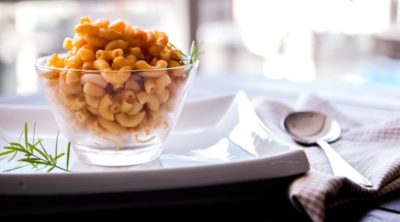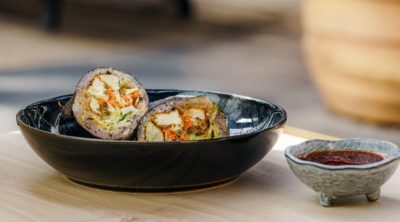
While champagne has been the ideal wine for celebrations, its premium price makes it difficult to indulge in it every now and then. There are other kinds of sparkling wines that make good alternatives. Let’s take a look at them in the following Tastessence article.
Did You Know?
Italy is the country with the largest proliferation of diverse kinds of sparkling wines in the world. Moreover, Germany has the highest annual per capita consumption of sparkling wine across the globe.
While most of us are familiar with champagne, only few of us are aware that it is the name of a particular type of sparkling wine that hails from the Champagne region of France. This prized, effervescent wine is prepared by a two-way fermentation process, wherein yeast and sugar are added during the second fermentation to form carbon dioxide that results in the fizz formation. Prepared from a blend of three kinds of grapes such as Chardonnay, Pinot Noir, and Pinot Meunier, this type of wine is well-known for its fine quality and preparation technique.
Champagne and celebration have always gone hand in hand; however, its high prices can be quite off-putting. The moderately priced ones range from $30 to $60, and the high-end ones cost $100 onwards. Not all of us can afford to bring home bottles of Dom Pérignon or Veuve Clicquot, especially during festive occasions when a large number of people gather together. Thankfully, for those of us who are on a budget, there are other effervescent wines that are good alternatives to France’s sparkling wine. Like champagne, they have bubbles in them, and are food-friendly wines that can be consumed as aperitifs or with various foods.
Inexpensive Alternatives to Champagne
Spanish Cava
Cava is a type of sparkling wine, hailing from the Catalonia region of Spain. It is prepared using the same technique involved in making the French Champagne; however, it is prepared from a blend of Xarel-lo, Parellada, and Macabeo. Freixenet’s sparkling wines have been titled to be the best-tasting effervescent wines, according to the Wall Street Journal. In fact, 80% of Spanish Cavas are exported by Freixenet. Cavas are available in two types: white and rosé. The rosé variety is called Cava Rosé or Rosado, whose attractive pink color and fizzy nature spearheads the festive mood during occasions.
Cavas cost half of what champagne costs and tastes almost equally good, although lighter and fruitier. It’s slightly less acidic as compared to champagne, with notes of green apple, dried herbs, citrus, and honey emanating from it. Besides being crisp and lively, this effervescent wine is smooth and soft on the palate. Cavas are also differentiated based on their level of sweetness and are classified as Brut Nature, Brut, Seco, Semiseco, or Dulce. Among them, dulce is the sweetest of cavas with brut being the least sweet.
Note: While affordable cavas range from $10 onwards, those that are available at less than $5 aren’t exactly wine and taste like fizzy water. So, super affordable isn’t exactly the best!
Italian Prosecco
This elegant, fine-tasting, Italian equivalent of champagne is manufactured in the northern Veneto region of Italy, and is primarily made from Prosecco grapes. Consumed during almost every occasion in Italy, these refreshing, light wines vary in sweetness from brut, extra dry, to dry. However, their ‘brut’ versions are much sweeter than those of the cavas. Proseccos are straw-colored, light-bodied wines that carry notes of peach, apricot, pear, apples, acacia, and citrus, and an intense, flowering aroma.
Unlike champagne or cava, Prosecco wines do not ferment in the bottle; instead, the second fermentation process (addition of yeast and sugar) takes place in tanks, where the wine is kept under pressure. This is done to capture the freshness and fruitiness of the grapes, which is why Proseccos have a more fruitier and sweeter finish. However, since it hasn’t been fermented in a bottle, it must be consumed within two years of bottling, although high-quality vintage Proseccos are aged for up to 7 years. These wines have been gaining popularity across the globe, and you will find them being served like beer, in almost every restaurant in Venice.
Note: Look for the “DOC” (Denominazione di origine controllata) or “DOCG” (Denominazione di origine controllata e garantita) label on the bottle. This will ensure good quality Prosecco wine. You will get a good quality Prosecco for $15 to $20.
French Crémant
Well, sparkling wines are not just made in the Champagne region of France, but are also made in different parts of the country including Alsace, Burgundy, Loire Valley (Anjou-Saumur and Touraine), and Bordeaux. Although these wines are made in the same way as champagne, they cannot be called so because they’re not from France’s ‘Champagne’ region. Nevertheless, they also go through the second fermentation process in the bottle. These wines, like other sparkling wines, are considerably cheaper.
Made from a blend of different types of grapes―Pinot Blanc, Pinot Gris, Pinot Noir, Riesling, and/or Chardonnay, this delicate white wine contains good acidity. Its flavor profile varies depending on the blend of grapes used to prepare it, and the region it hails from. Those from Burgundy are rich and creamier on the palate, while those from Alsace are crisp, packed with zesty citrus fruit. These French alternatives for champagne are food-friendly and great in terms of flavor and elegance.
Note: Purchase Crémant from Alsace region for a fine French Crémant experience. They are prepared from a wide variety of grapes that impart a lovely acidity and freshness to the effervescent wine. Again, good quality Crémants are available with a price range of $10 to $15. For even better quality, try out the $20 ones if you’re budget allows you.
German Sekt
The sparkling wine from Germany is termed as ‘Sekt’. It is prepared from grape varieties like Pinot Noir, Pinot Blanc, Pinot Gris, and/or Riesling, and is made using both the traditional bottle fermentation method and also the tank fermentation method, with the latter being the more commonly used one. The Germans love their Sekt, with over 420 million bottles being produced in a year, and an annual per capita consumption of about five liters.
Like other sparkling wines, German Sekt is also available in a varying range of sweetness. The flavor profile will differ depending on the blend of grapes used to prepare it. Moreover, unlike other sparkling wines, this wine is not produced in a particular region in Germany; instead is produced all over the country, and understanding which type of Sekt to purchase may seem confusing. It is mostly consumed by the Germans themselves, with a small percentage being exported across to the US and other parts of the globe.
Note: Most Sekt use grapes imported from countries like Spain, France, and Italy. If it’s made purely from German grapes, it will have the term ‘Deutscher Sekt’ on its label. You’ll get a good quality German Sekt for under $20.
Besides these sparkling wines, there are others like the Australian sparkling red wine, Portuguese Espumante, Italian Moscato d’Asti, and even the Californian sparkling wines. Champagne has earned its name for a reason, and while there cannot be any true substitutions, opting for certain alternatives can help prevent the wallet from getting stripped. So, if you’re on a budget, these alternative sparkling wines are a good bargain and can satiate your desire for an effervescent wine at a cheaper price.


